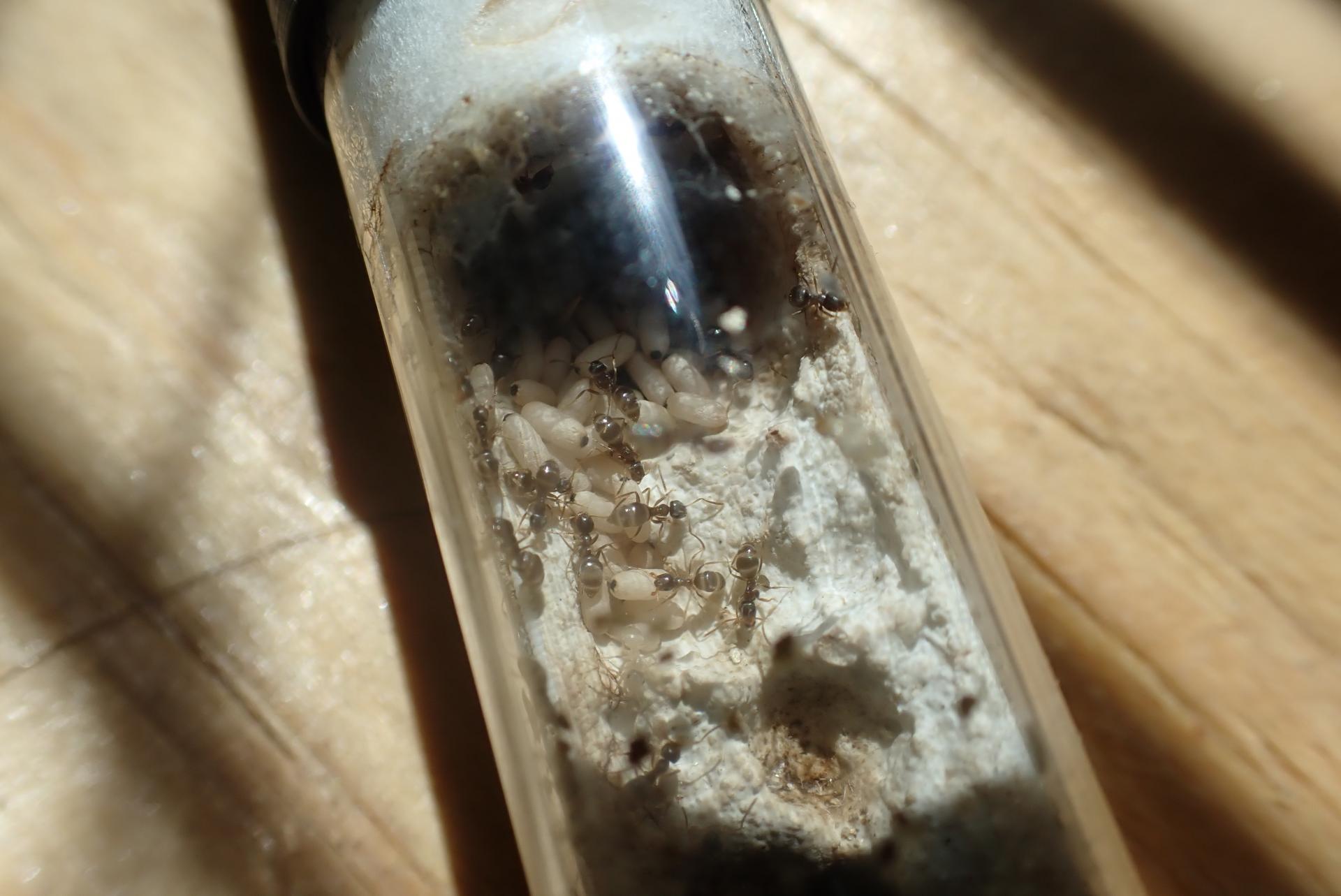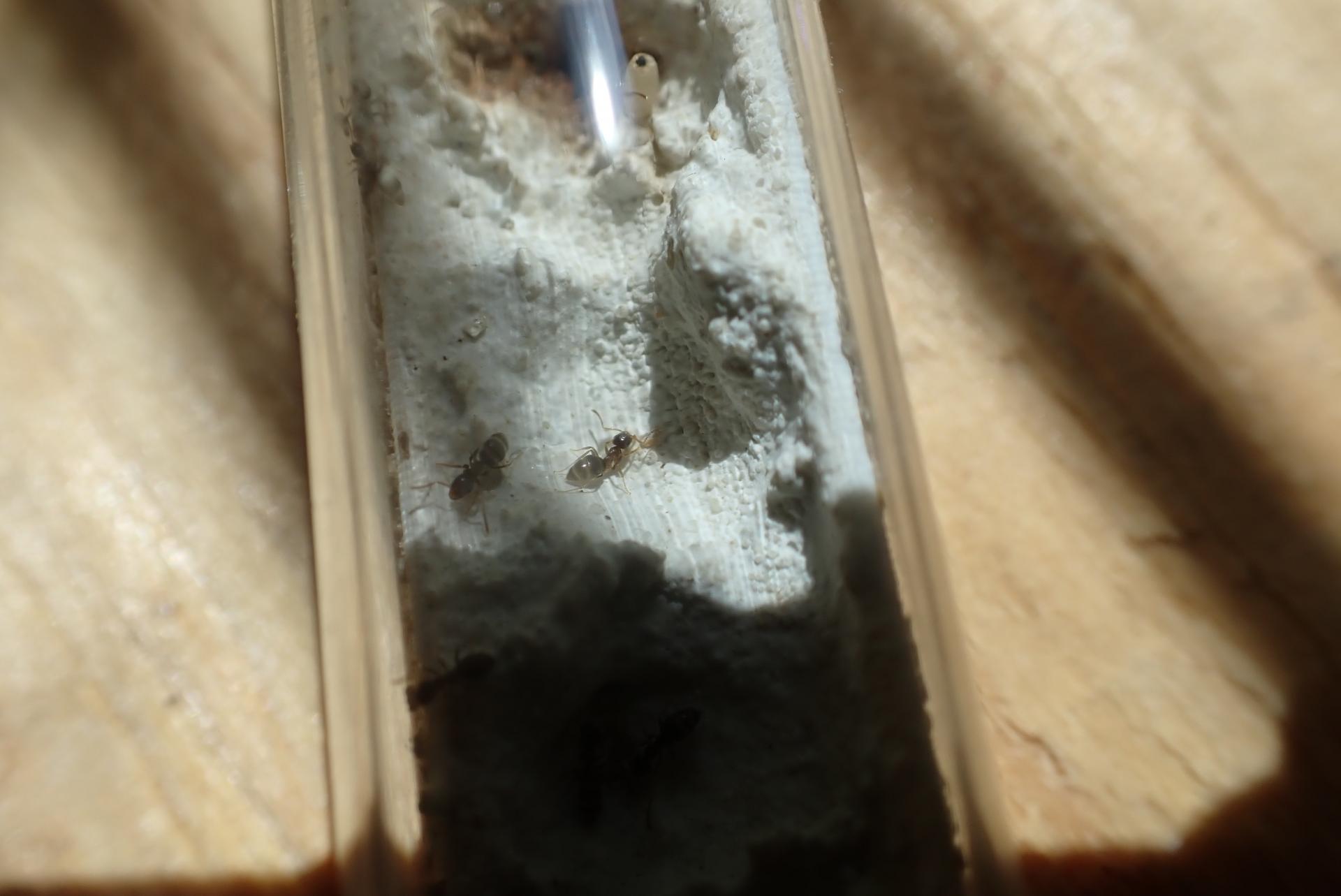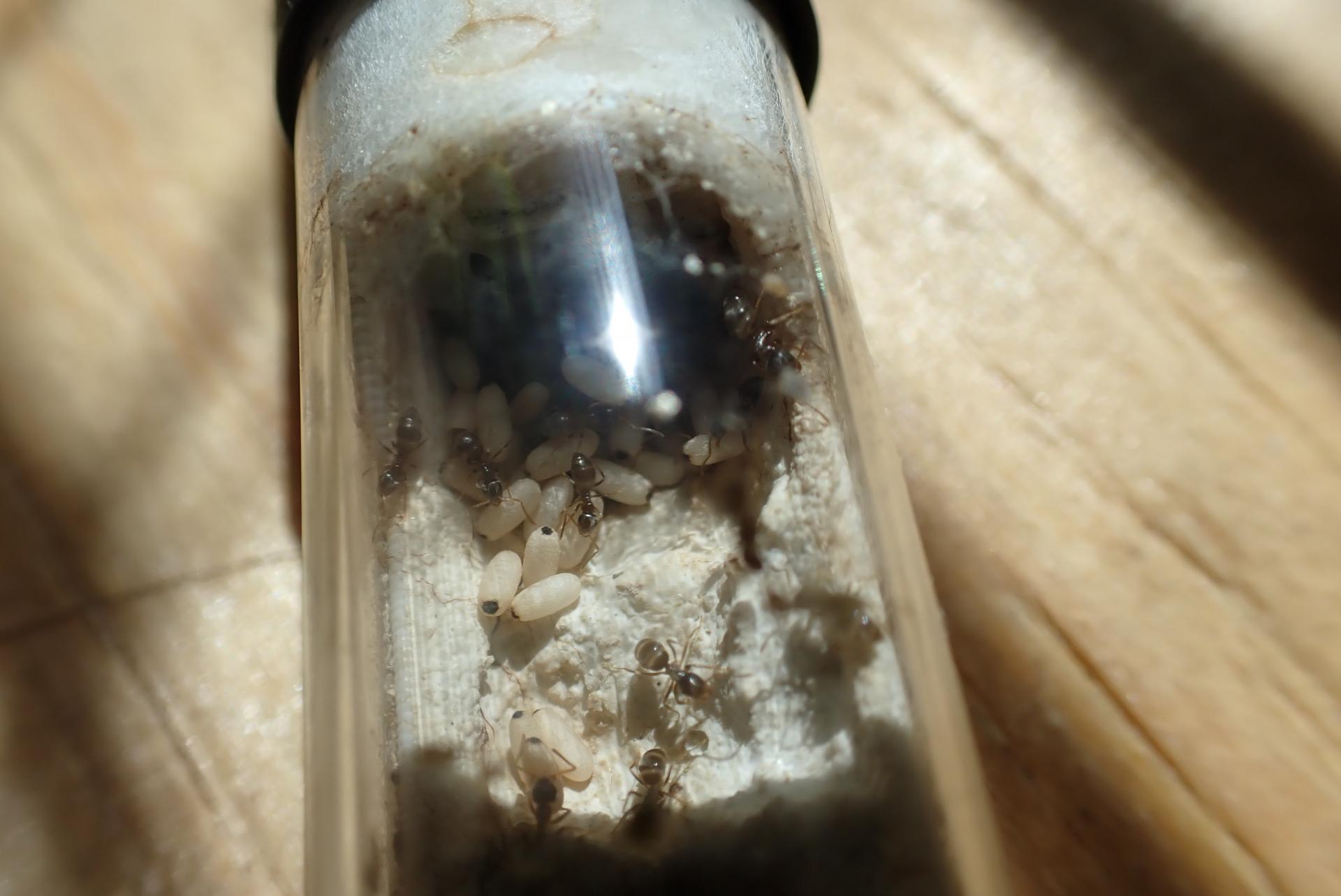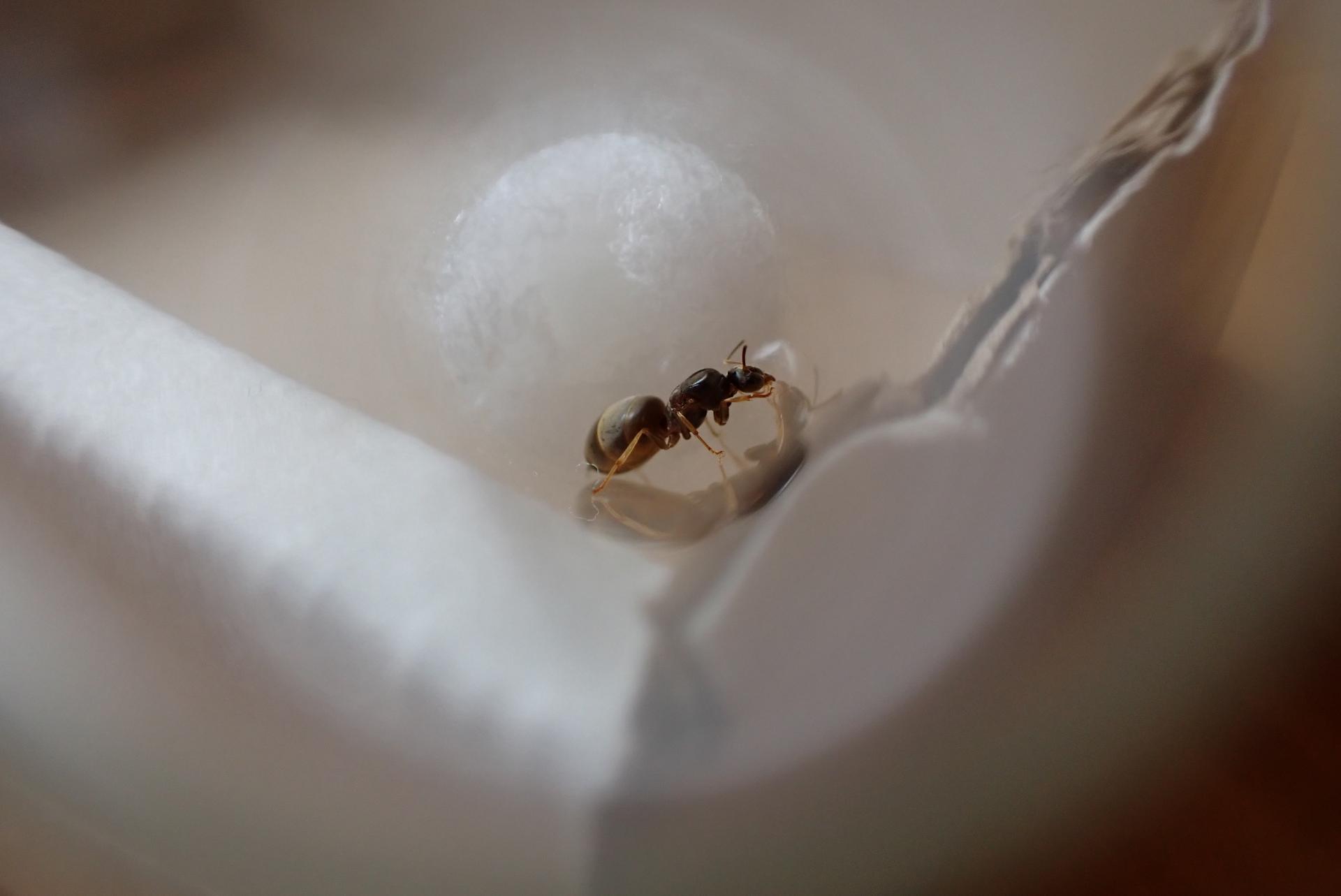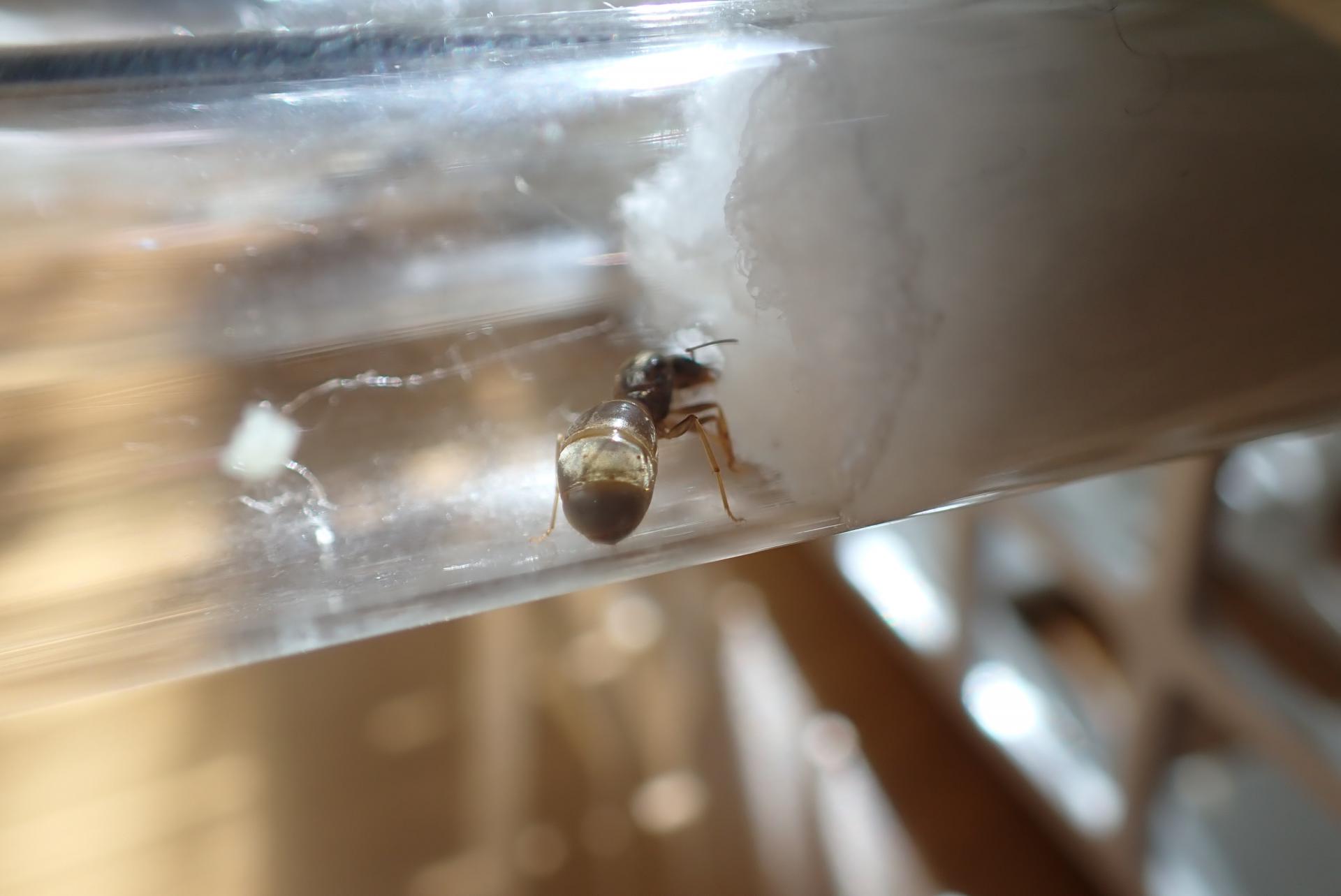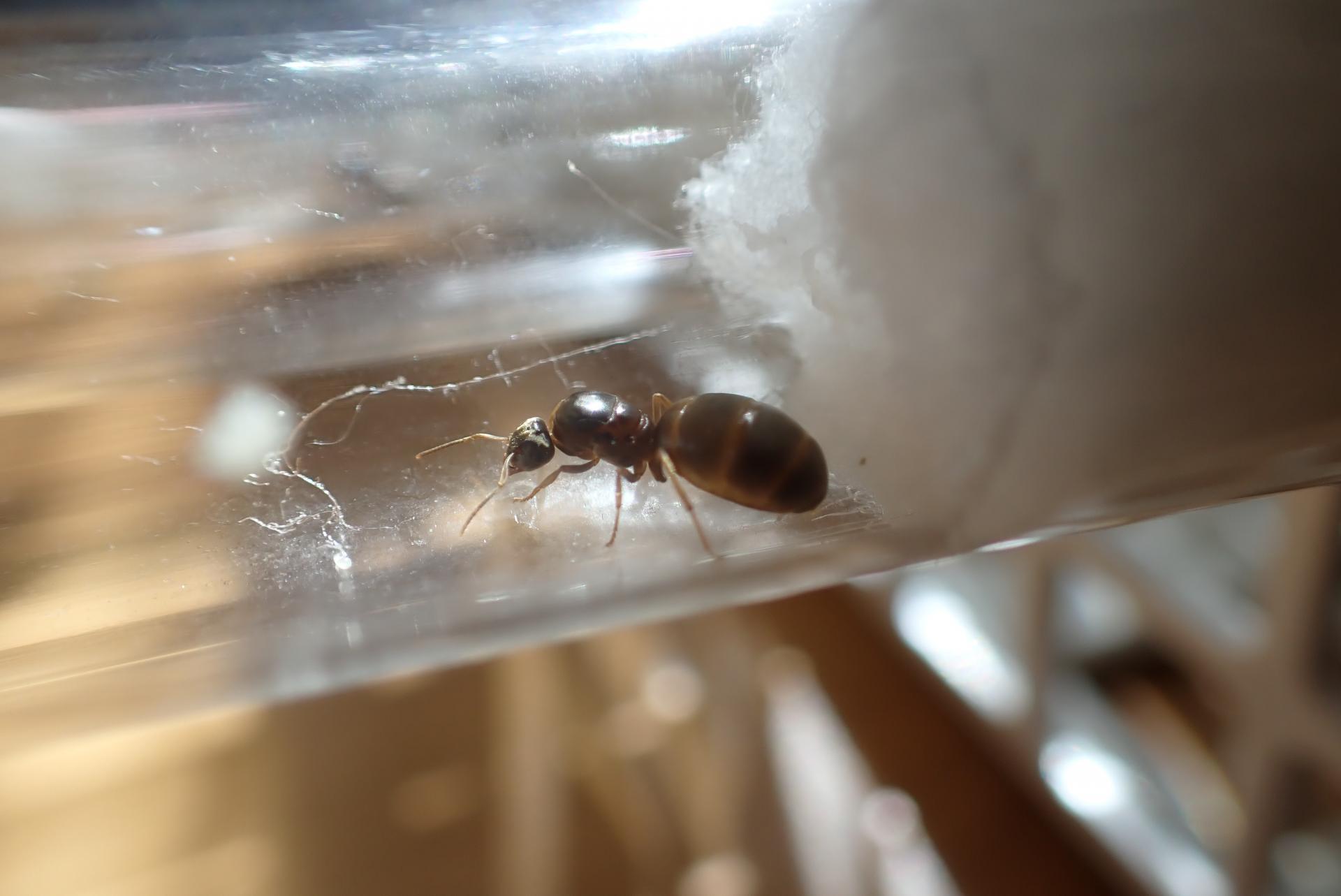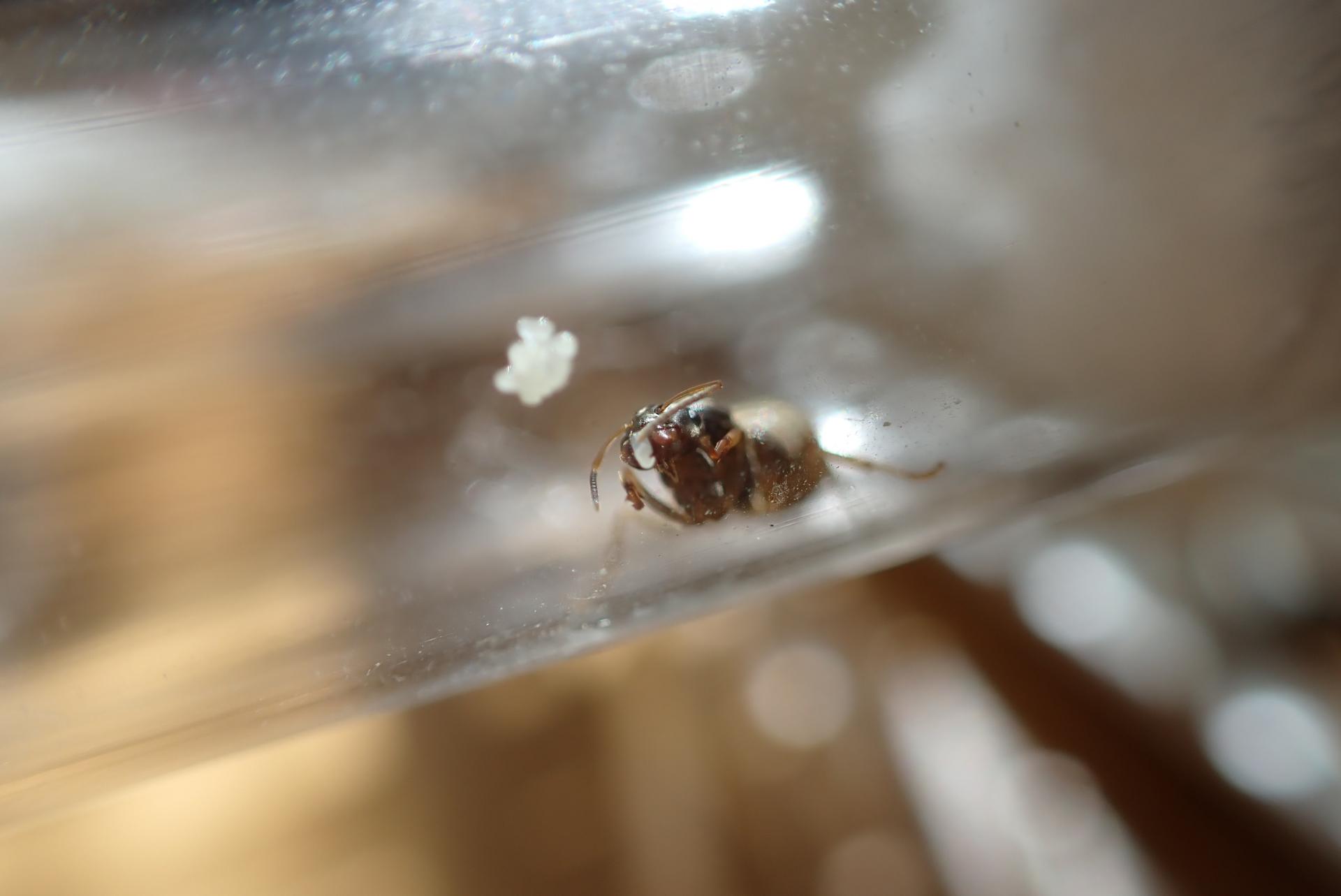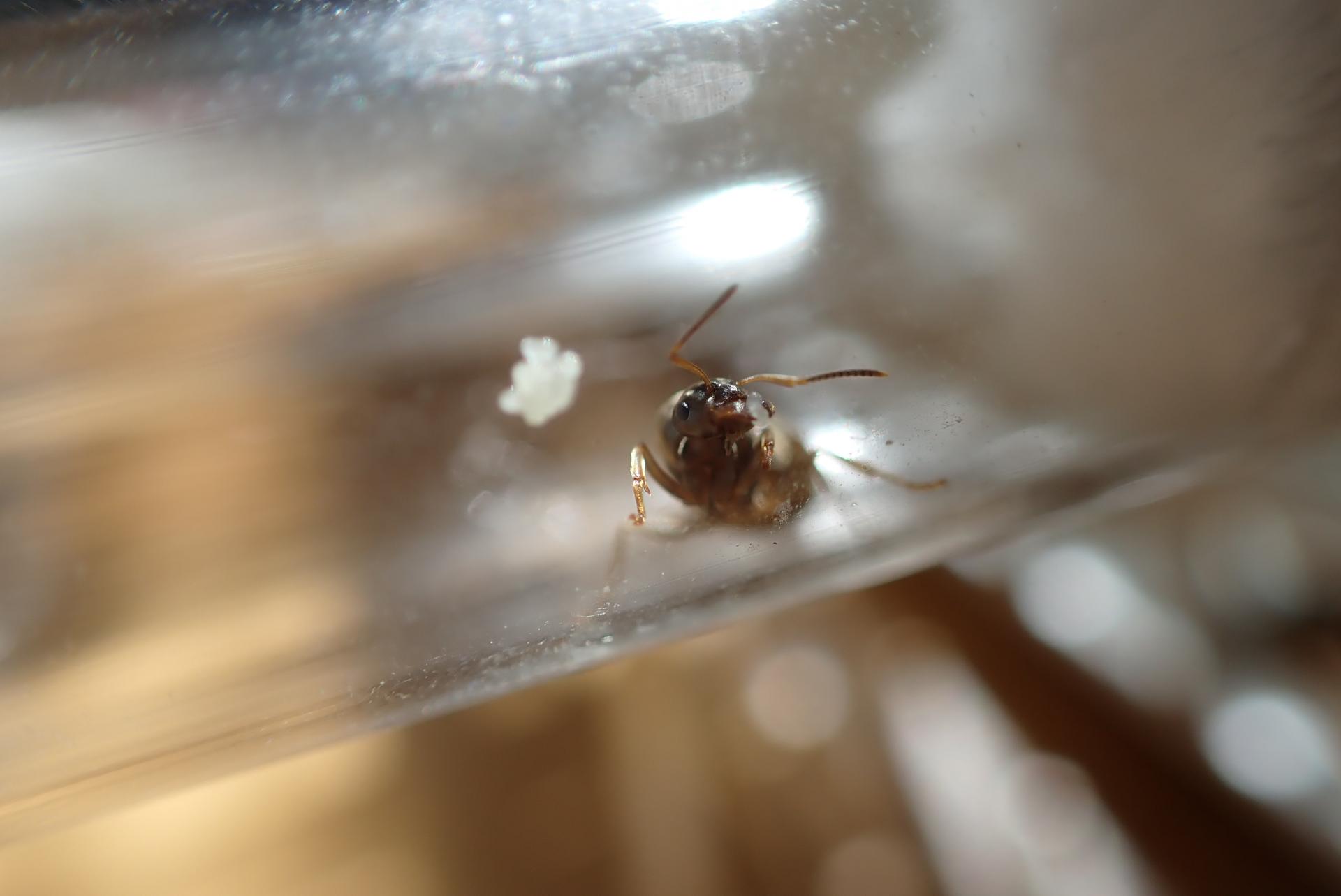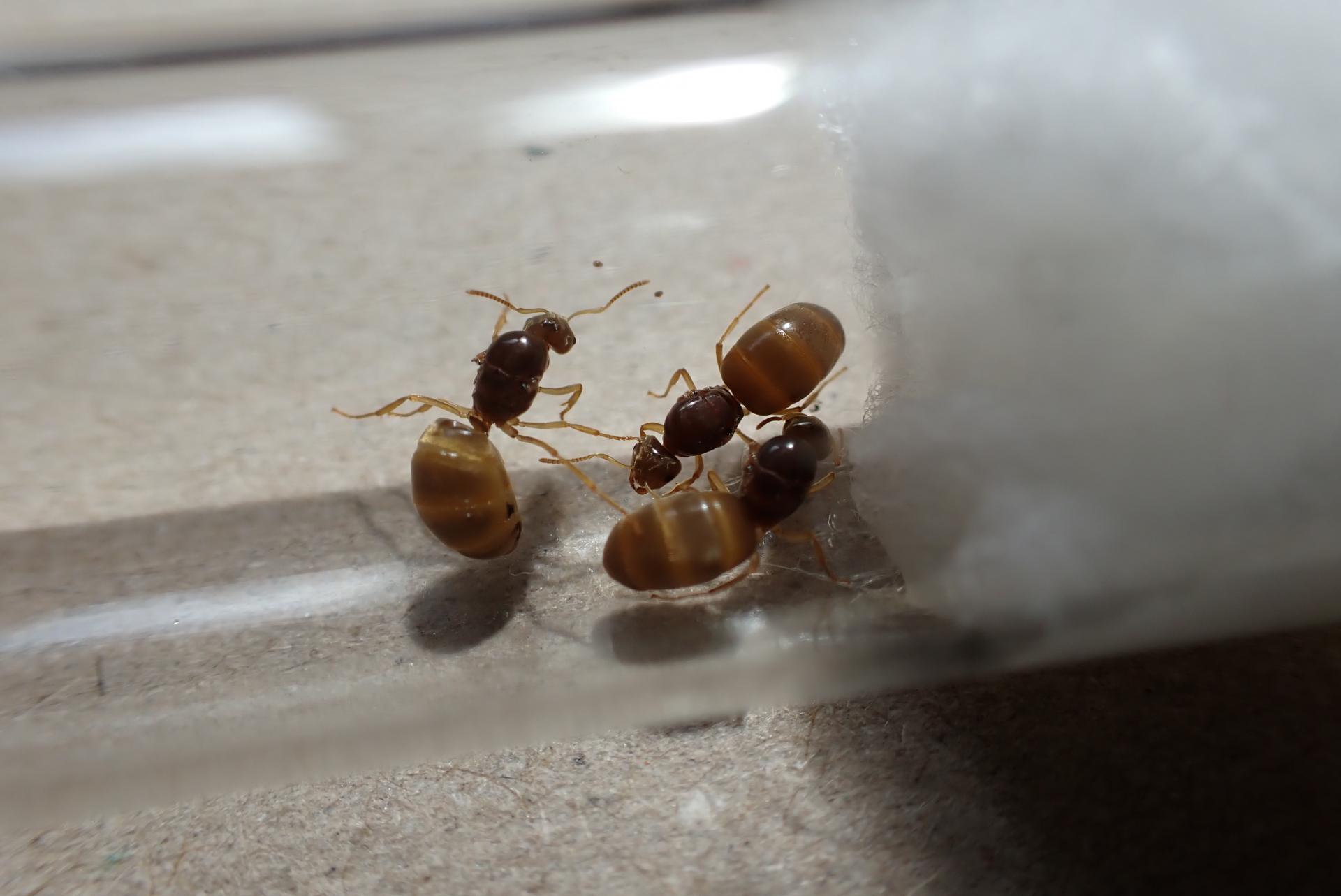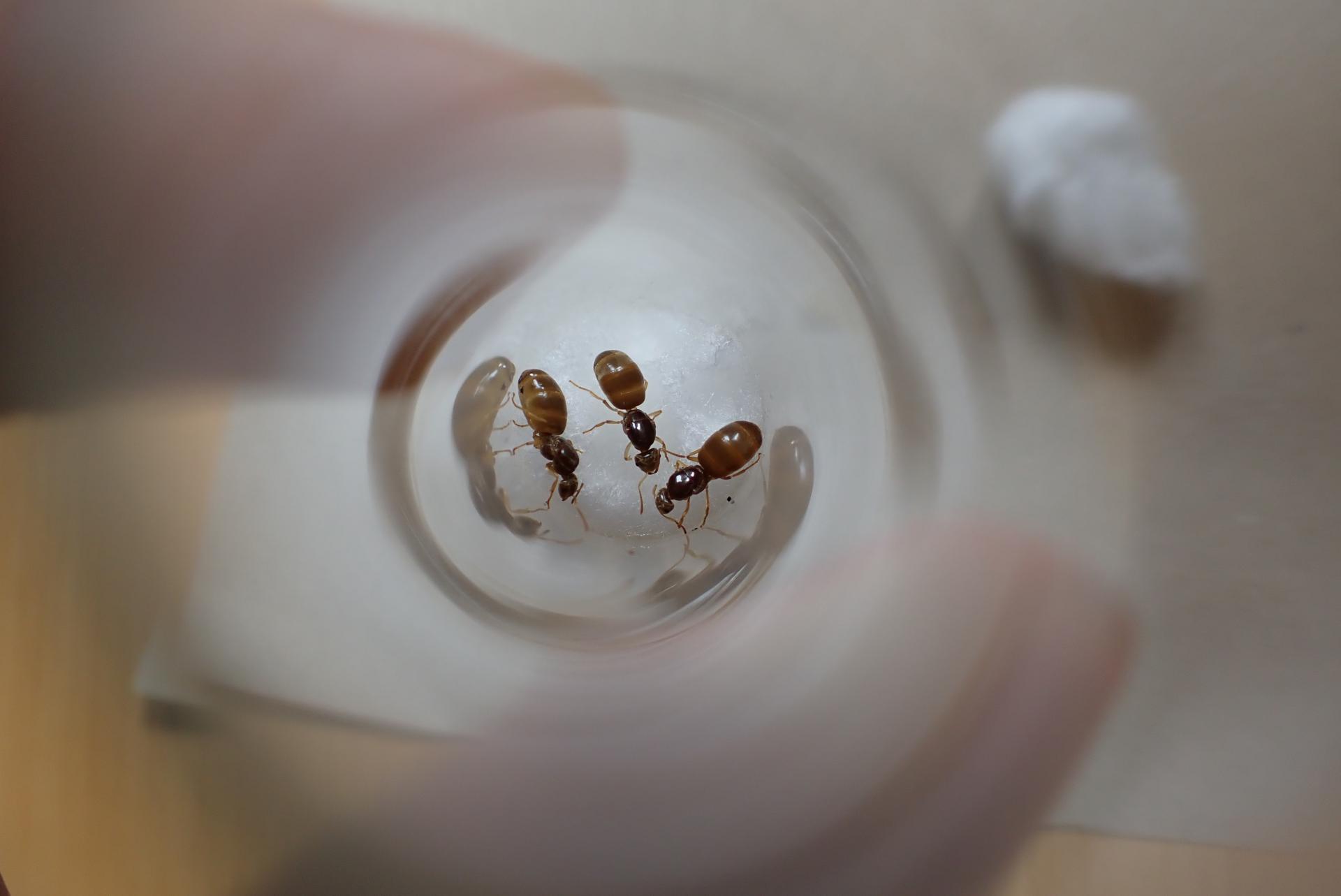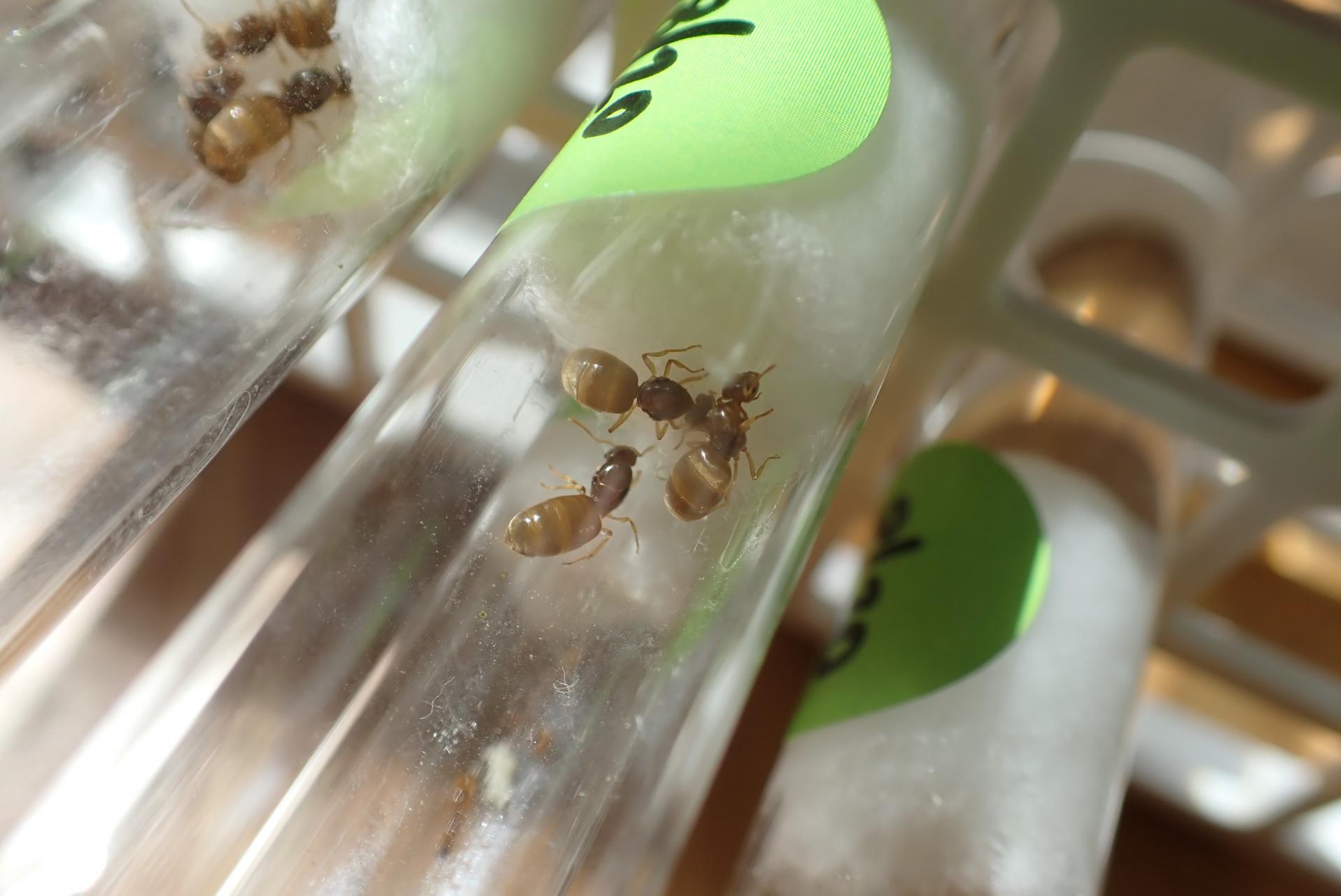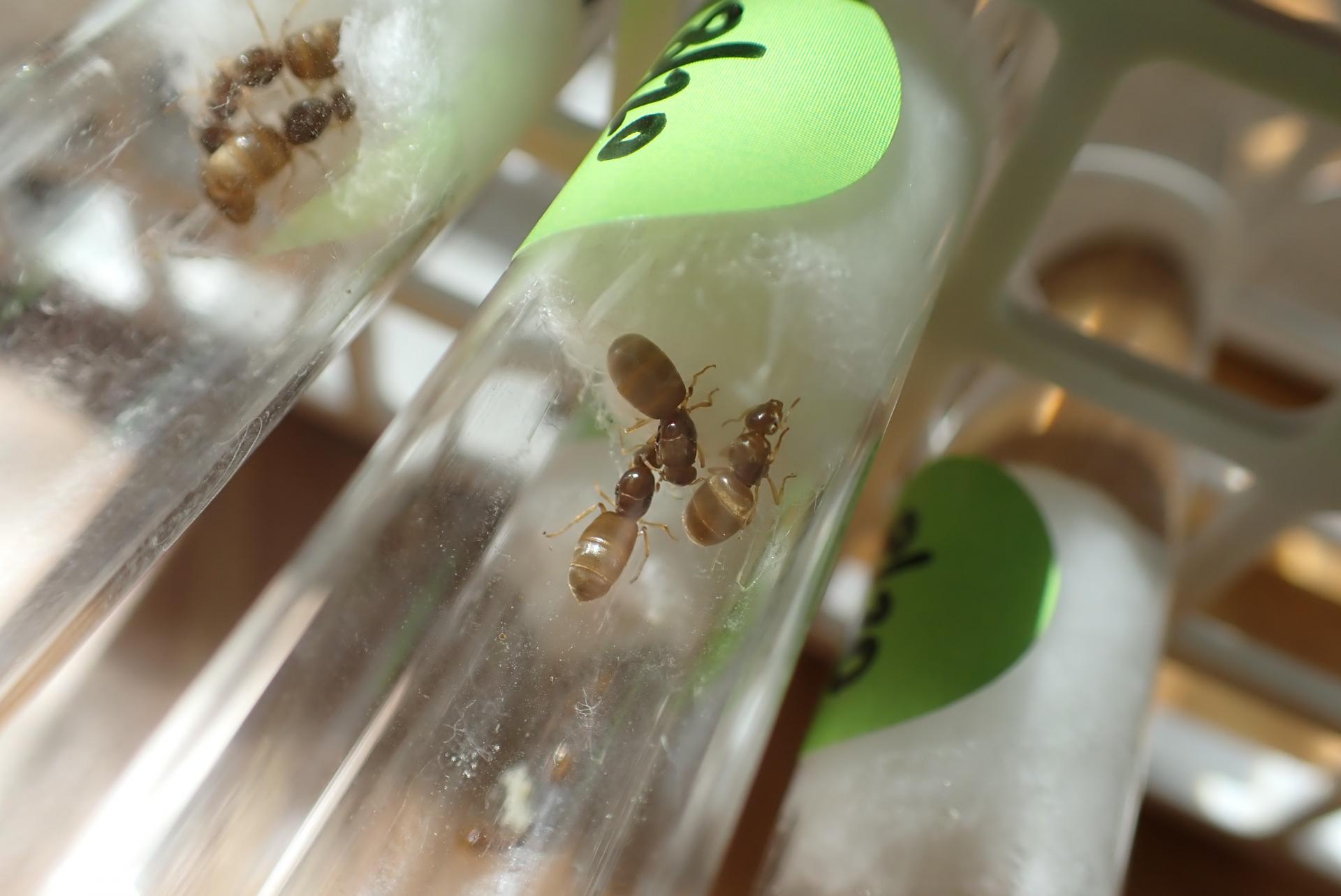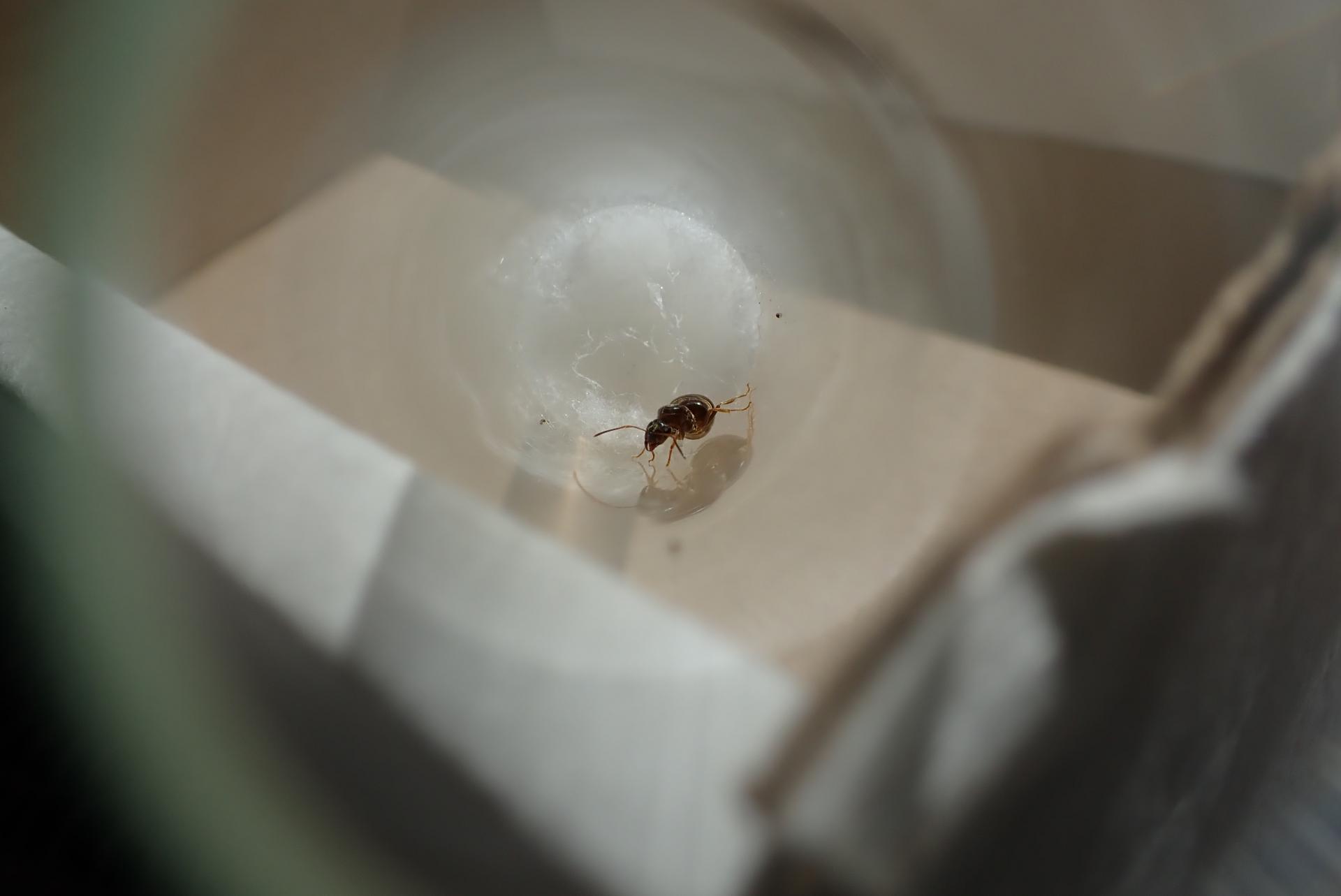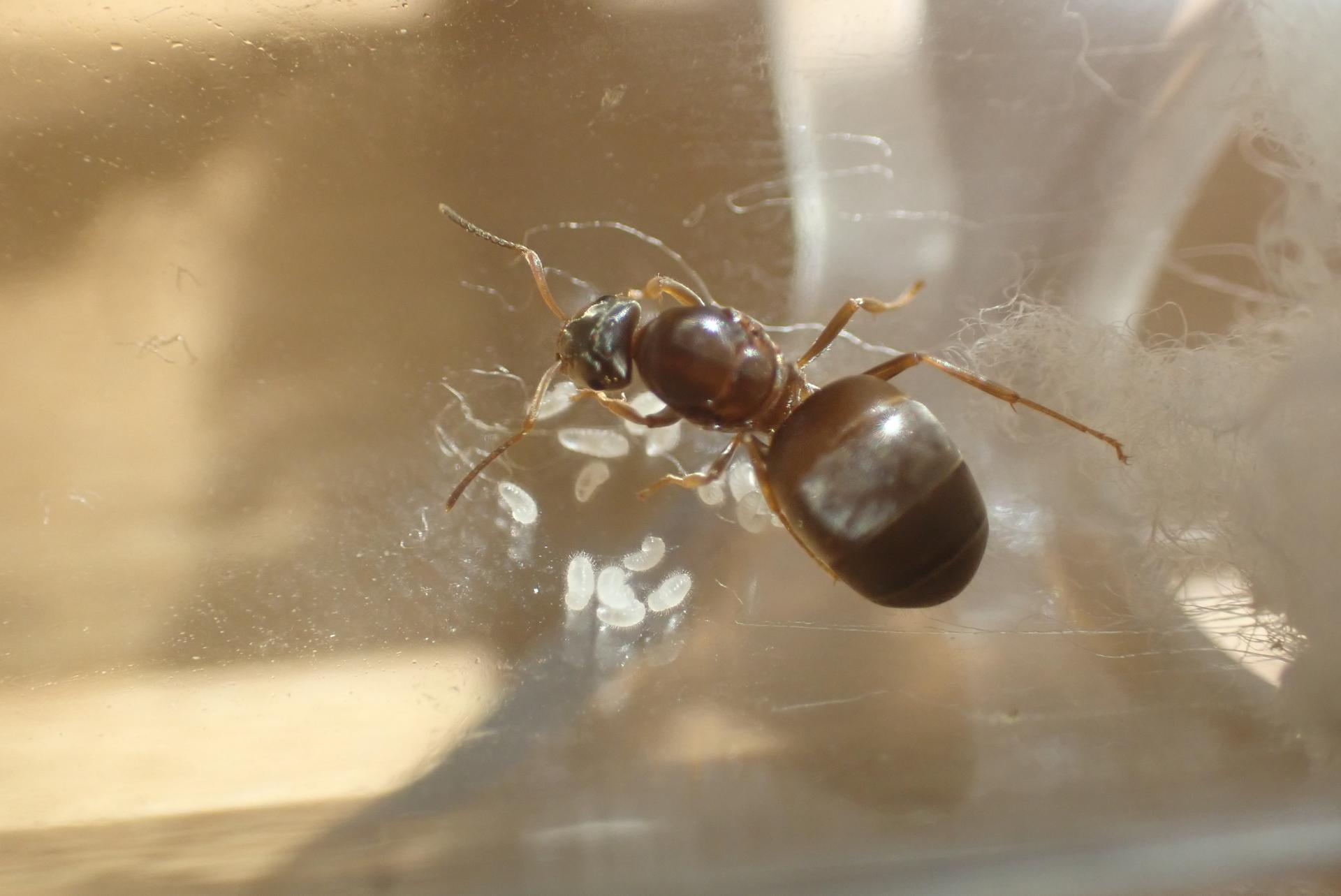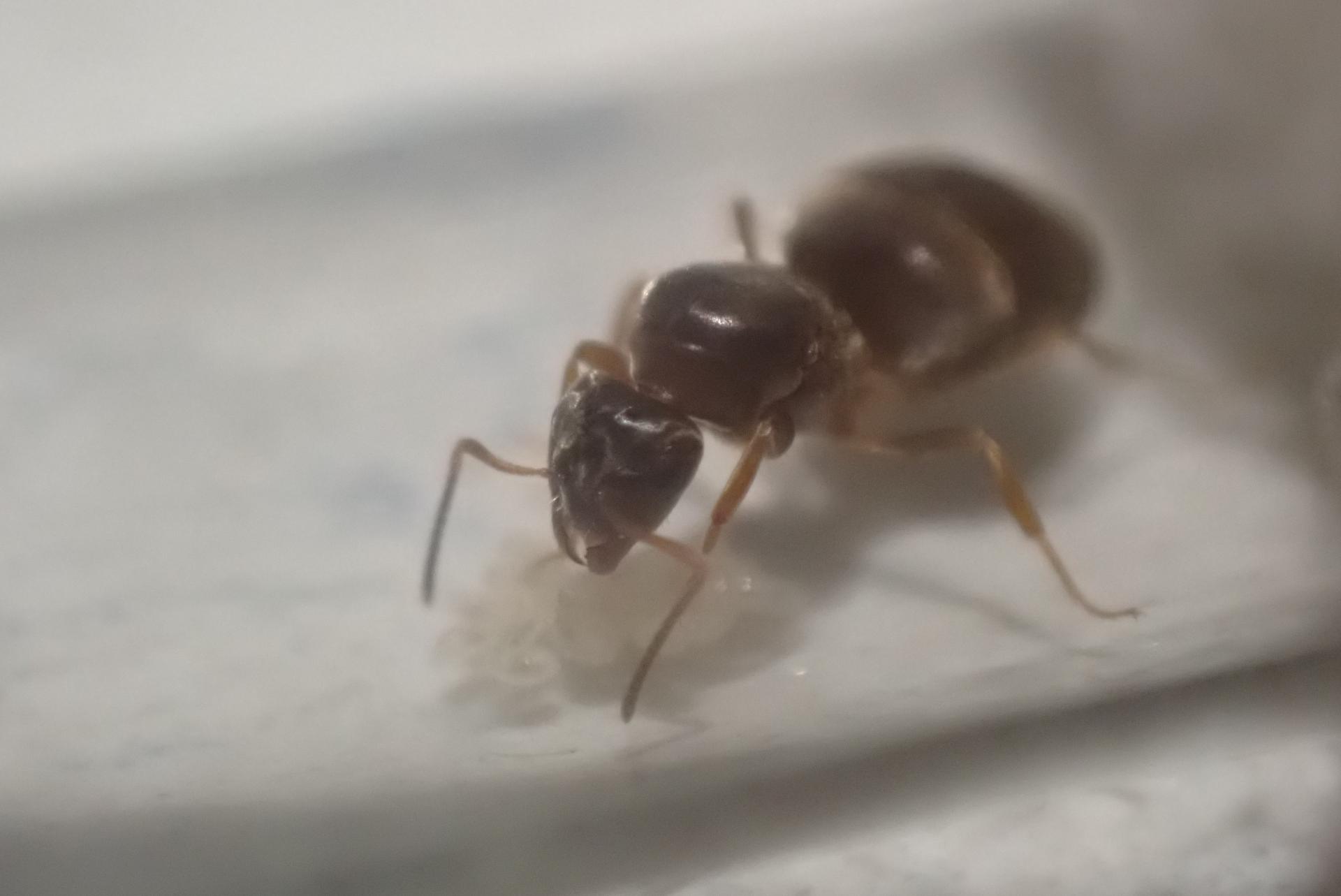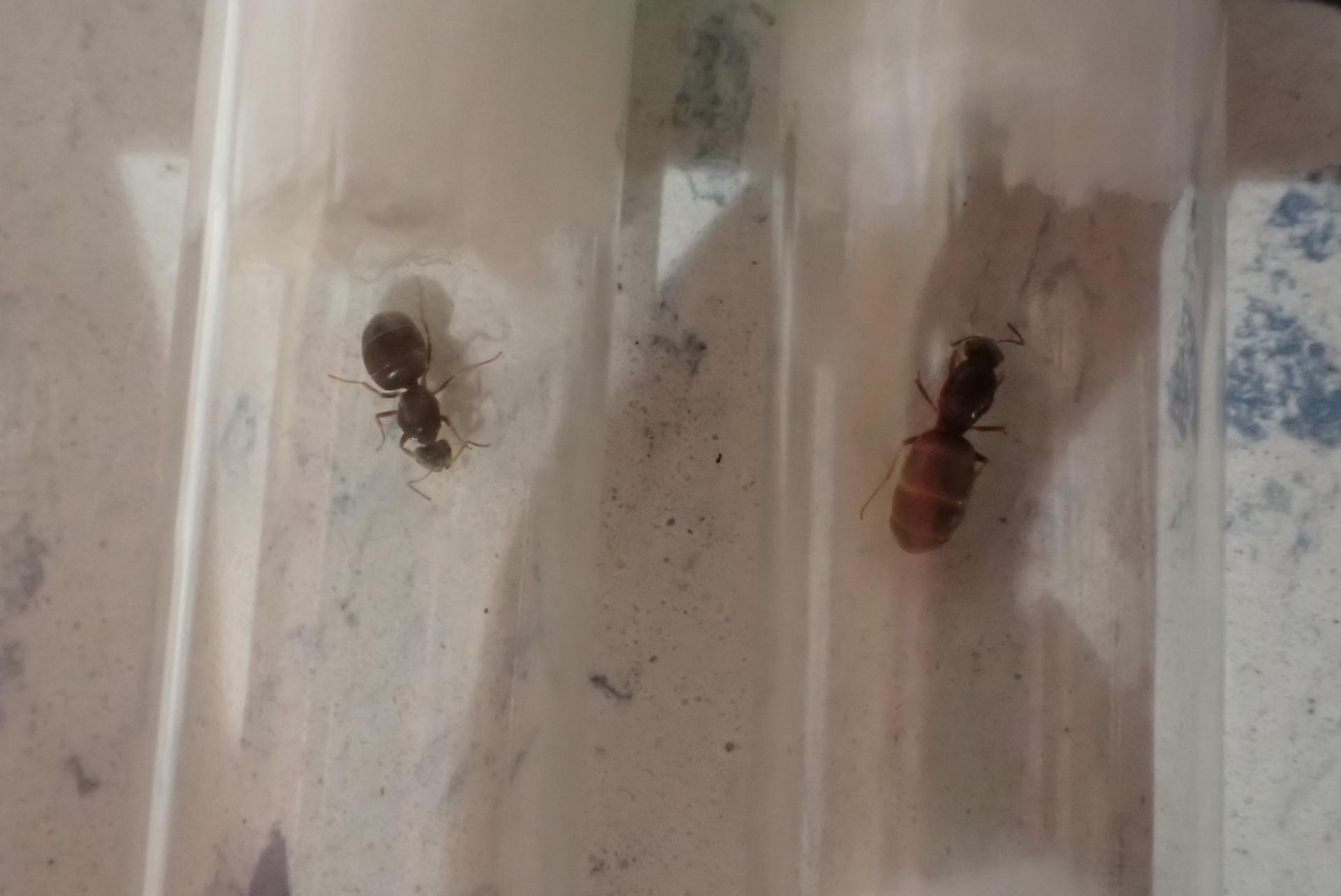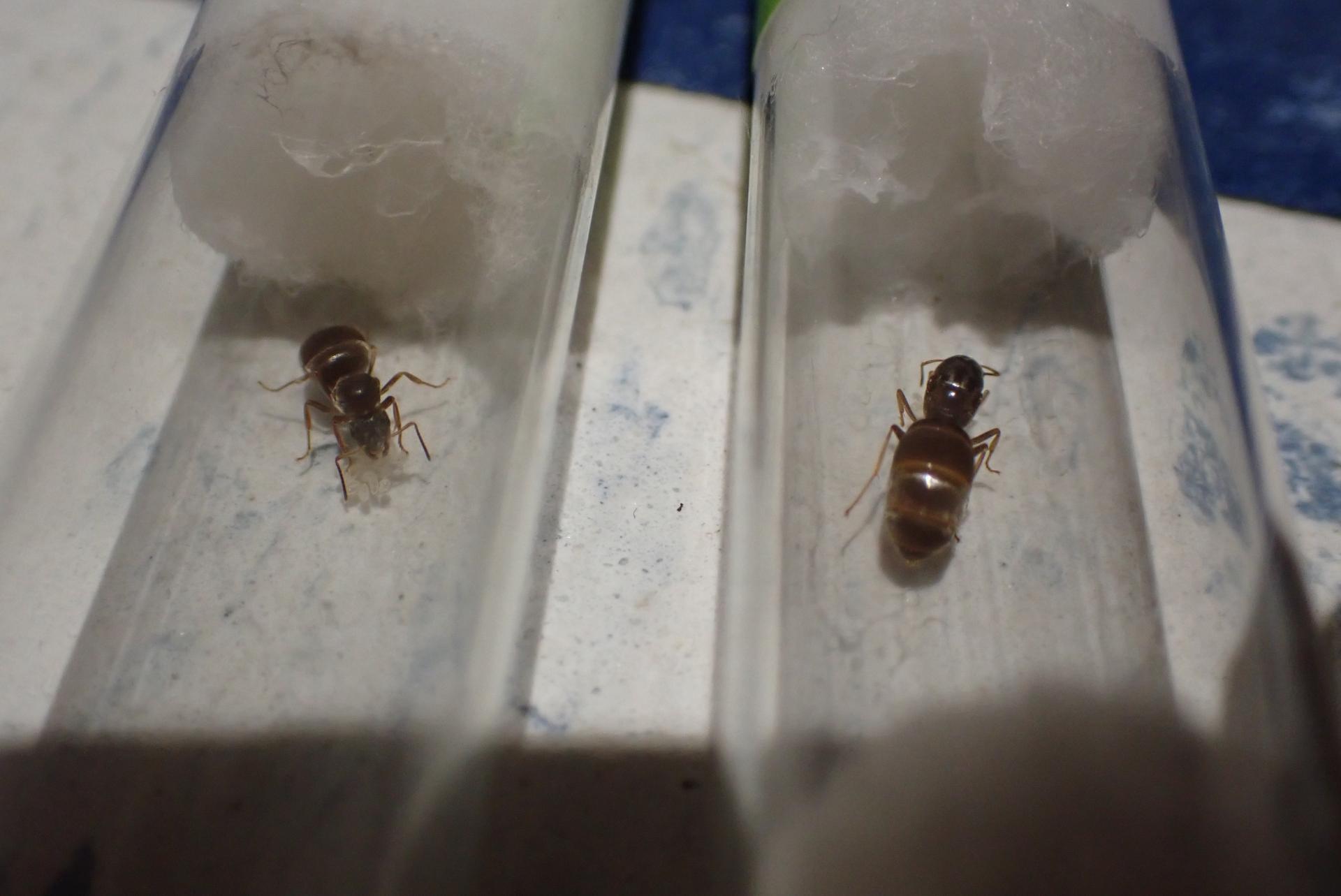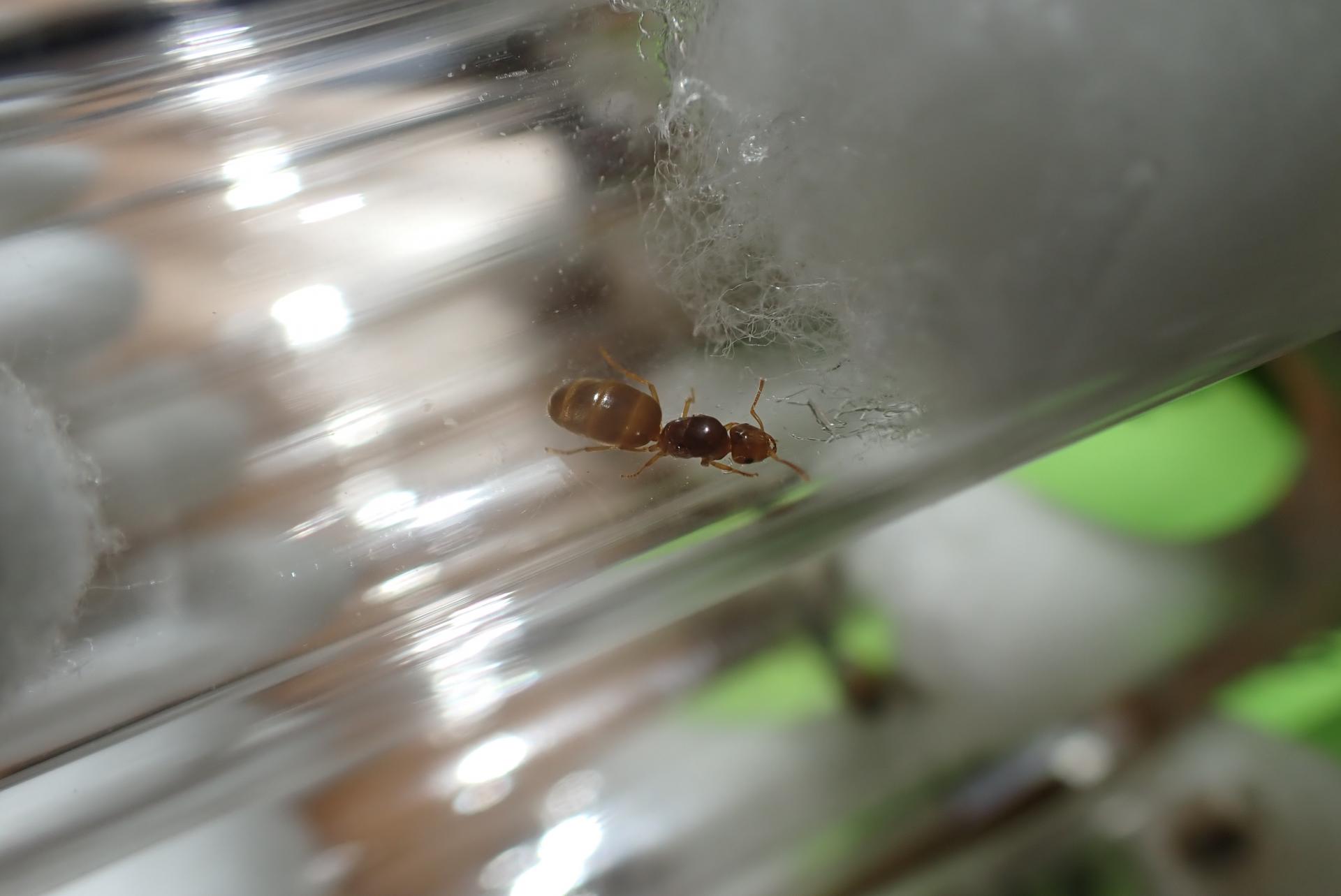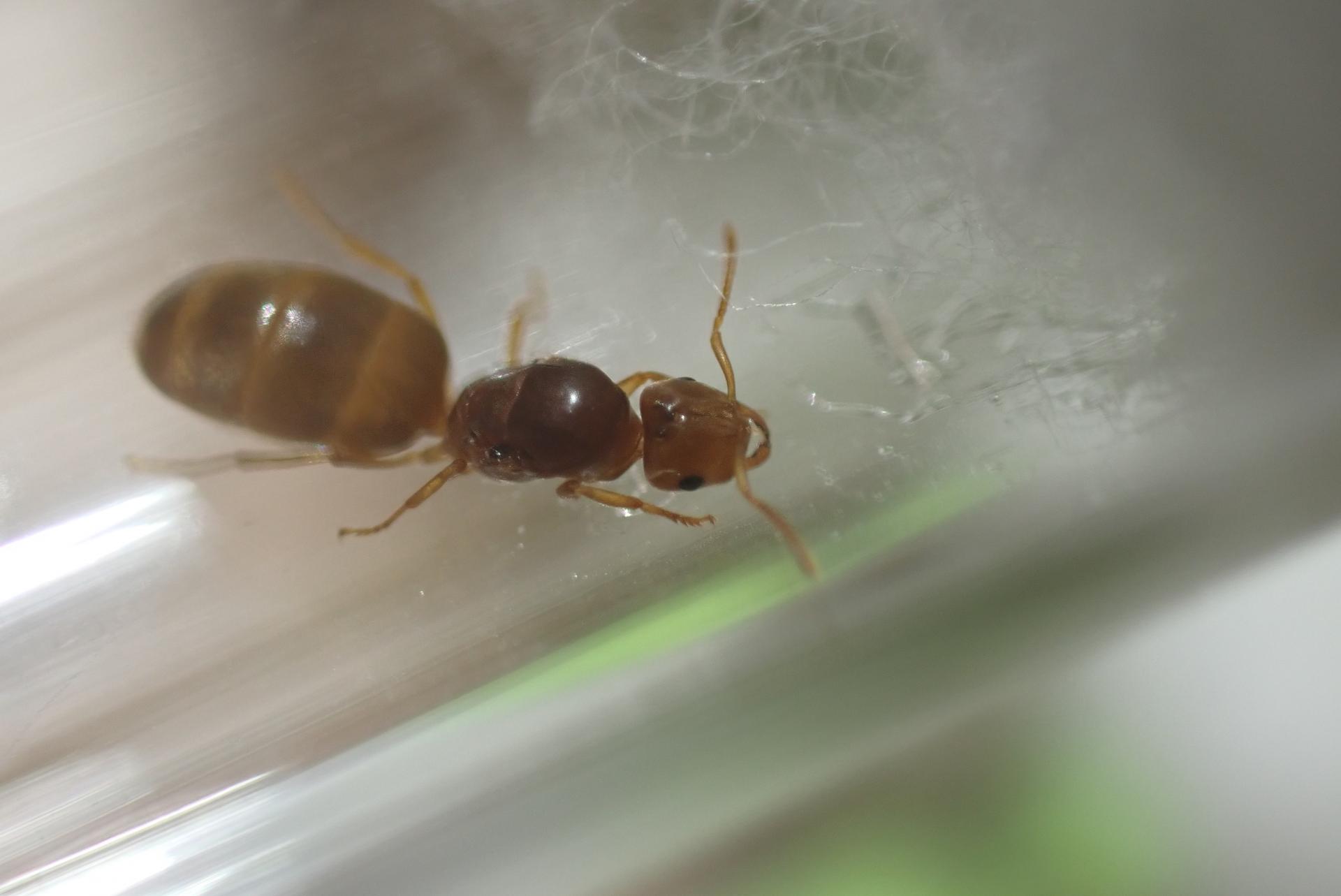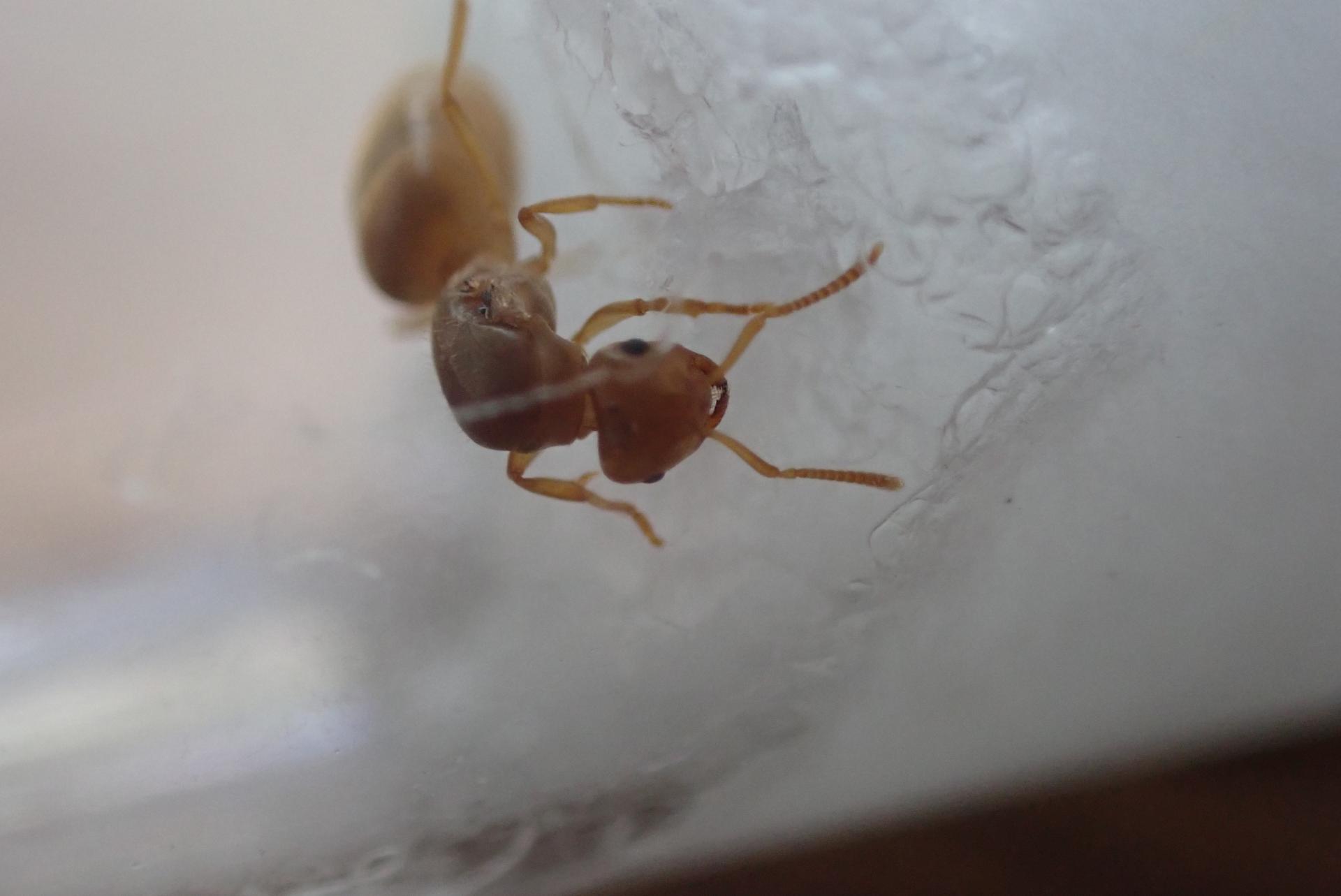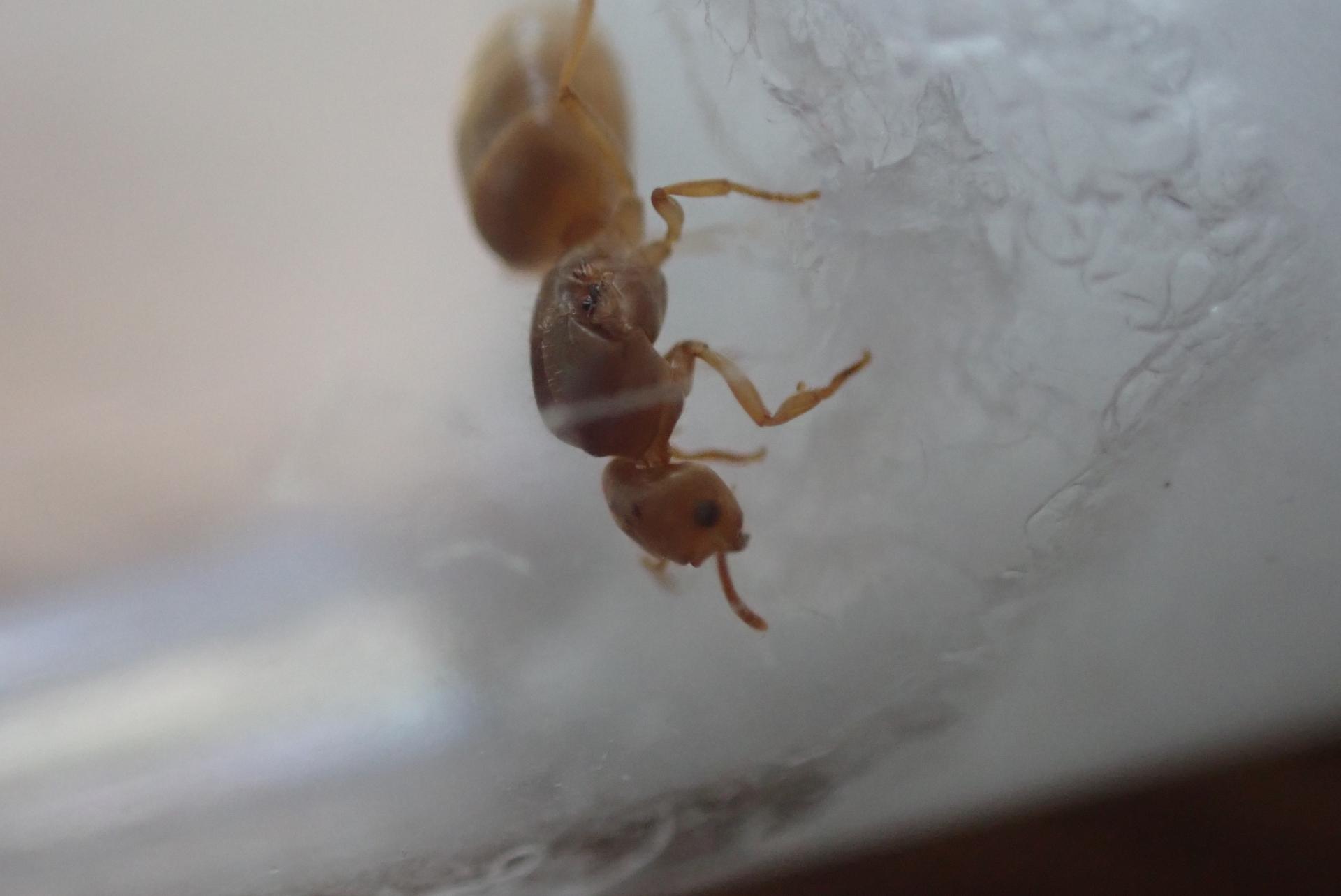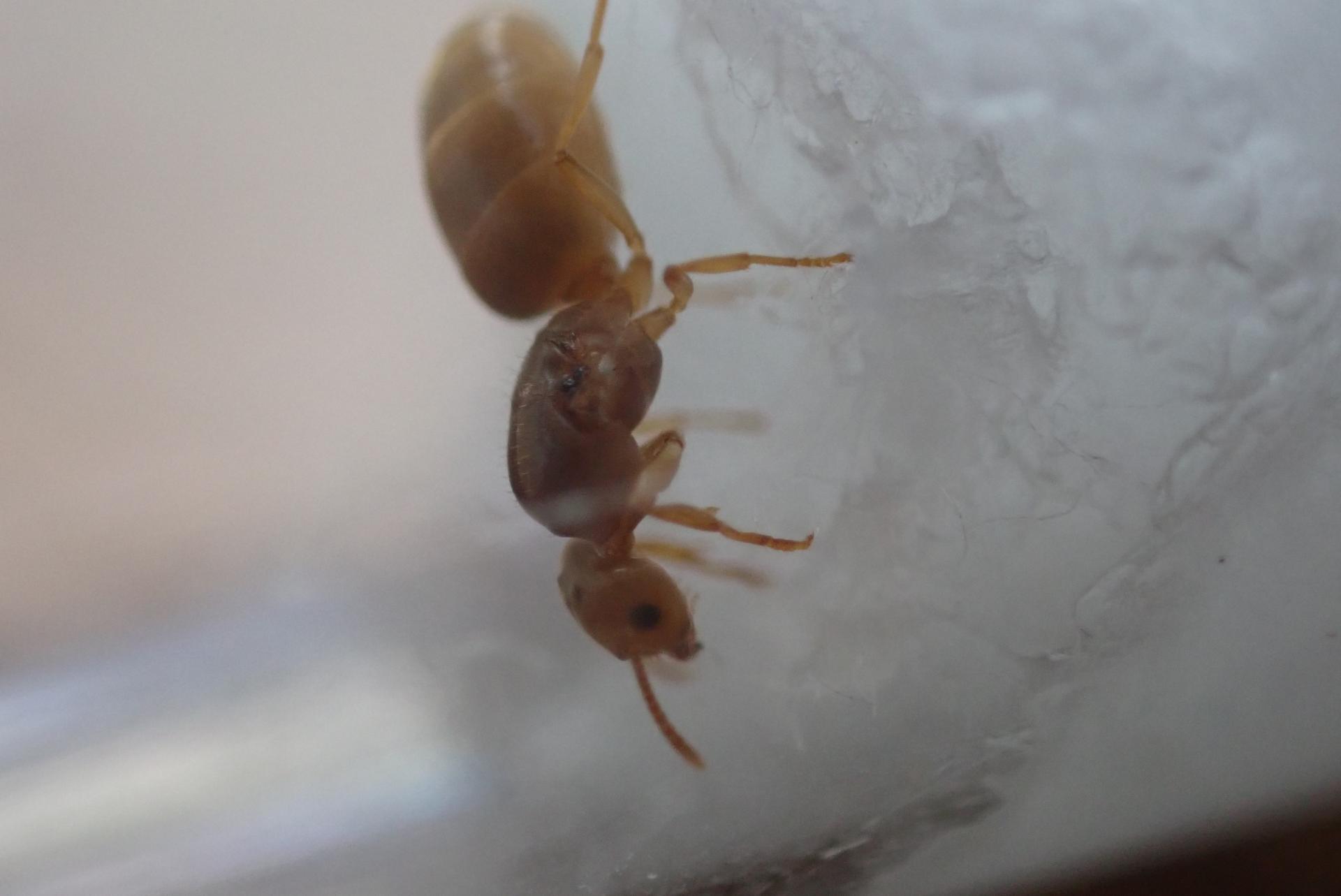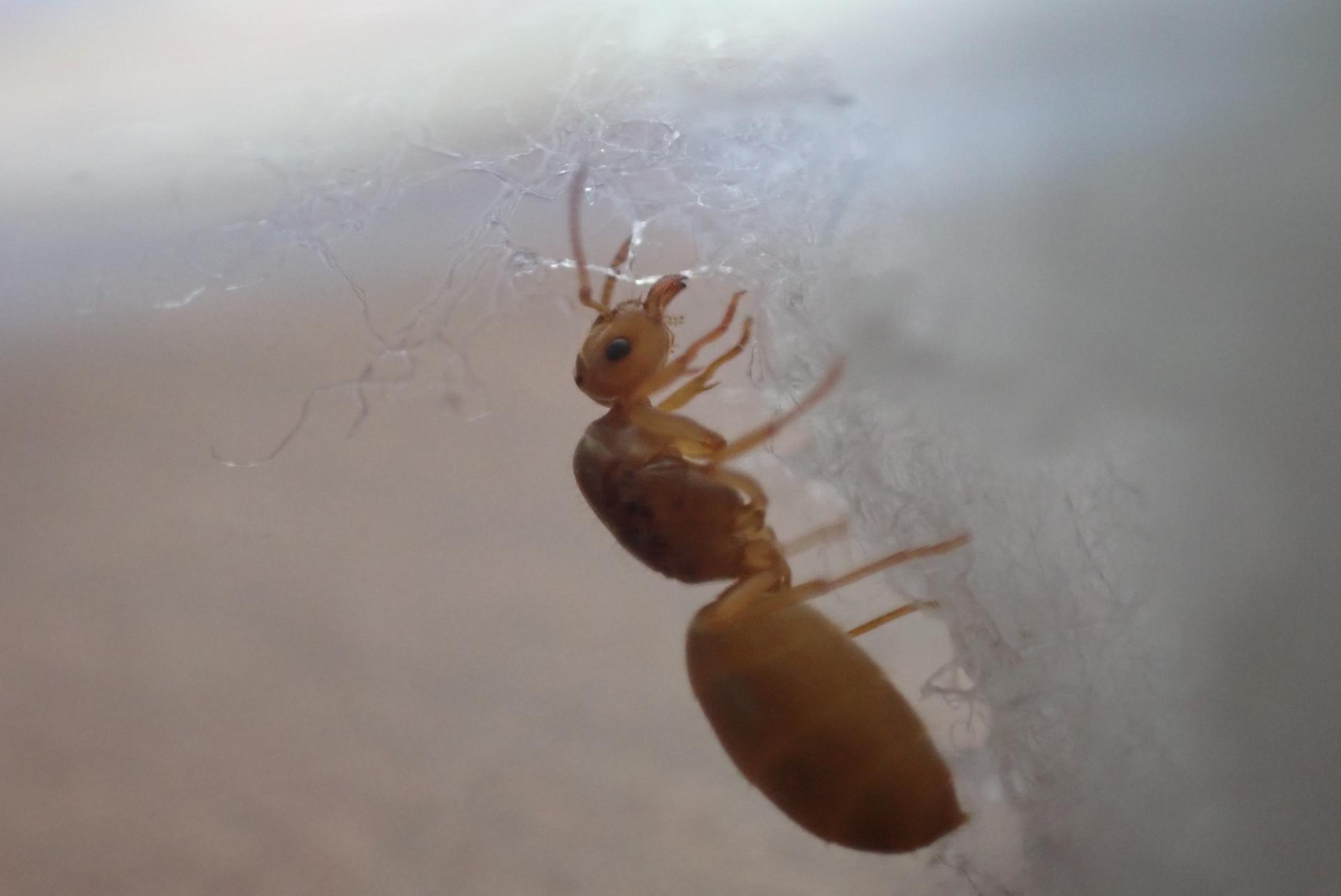Ants_Dakota's Lasius sp. Journal
Entry 1: Lasius neoniger
9/2/2024
Background
If you live in the United States, you have heard of Lasius. Antwiki notes that Lasius neoniger are native to every continuous state in the US, and yet these "cute" little ants are often underappreciated. Vox finds that yards in America are becoming "ecological deserts" and are decreasing biodiversity across the board, including from chemical and pesticide usage. Accordingly, as human presence in nature increases, Lasius becomes more challenged to find traditional forms of food. On top of this, the invasion of Tetramorium immigrans, and their ability to consume nearly anything humans produce, has turned a difficult fight into a near-impossible one for Lasius in urban settings. Yet these brave defenders fight on, undervalued by many on this forum. "Keeping ordinary ants in extraordinary ways" is a saying I have unapologetically stolen from ANTdrew's and that is why this journal was started. I was initially hesitant to start a journal of my own again, as my past attempts have been sloppy and inadequate when compared to my good friend RushmoreAnts as well as my picture quality, despite a new camera, being not up to my standard when glass was in between me and my target. However, I have kept ants for nearly a decade and kept nearly every species of Lasius native to South Dakota at one point or another, so I feel there may be something I can add to the conversation here on formiculture. Furthermore, I was surprised with the lack of detailed journals kept on this species in recent years, perhaps reflecting the decline I have noticed in alates flying per nuptial flight. THG's Lasius neoniger journal is one of the larger colonies currently being documented on formiculture of that species, and other notable and detailed reads are by Scherme in 2019, or drtrmillers byformica neoniger journal as well as Crystals journal, both from 2013-2014. Recent colonies kept by formiculture members are either bundled in complete ant journals(if this is yours and you own a colony of L. neoniger, leave a post on your experience!) which I don't have time to look through, or look something like this or this or this. Therefore, I have decided to take up journal writing again. I will attempt to update this journal with the different species I am keeping(4 currently!) as time goes on. Here goes nothing!
Lasius neoniger:
I currently own 7 colonies of L. neoniger, 6 from a flight on 8/20 of this year, and one from last year, which is currently my biggest colony.
My large colony:
This colony was one of a few queens i caught last year, and I decided to keep it as my personal colony. I did not have time or money to hibernate it last year, and because of life I did not put as high of care into these ants as I should of, and yet they still grew, a testament to their resilience as a species against Tetramorium immigrans. This year I have fed them a lot more, and they have grown immensely because of it. L. neoniger seem to grow similarly to other fast growing species such as Tetramorium immigrans and Solenopsis molesta in that the queen will output eggs as soon as protein is found, and proportional to how much is found. This differs distinctly from Formica, who are far more cautious with laying eggs, no matter how much you feed them at first. Currently, I estimate this colony has over 50 workers, and is housed in a Por Amor Array Formicarium with my own diy outworld.
9/2
Queen is hiding in the shadows
My small colonies:
These queens were collected in a flight on August 20th of this year. Sadly, while I once used to be able to collect well over 50 of these queens per flight from my driveway, I was only able to find 6 queens this year. Lasius queens in South Dakota are often found on ornamental prairie grasses that decorate yards and were once native(or their ancestors were before hybrid crosses) to the great prairies that covered this land centuries ago. Specifically, these were found on some type of feather reed grass. I have noticed that these queens prefer grass with thick bunches of vertical seed clusters as opposed to grasses with thinner, more spread out, or more drooping seed bunches. All 6 of these queens have little egg clumps, and 5 were found on one feather reed grass within seconds of each other. The final one was on the ground. These are housed in a standard test tube setup. Interestingly, in South Dakota L. neoniger queens will lay eggs before hibernation, whereas they will not in other parts of the country.
8/21
9/2
Edited by Ants_Dakota, September 13 2024 - 7:48 AM.




